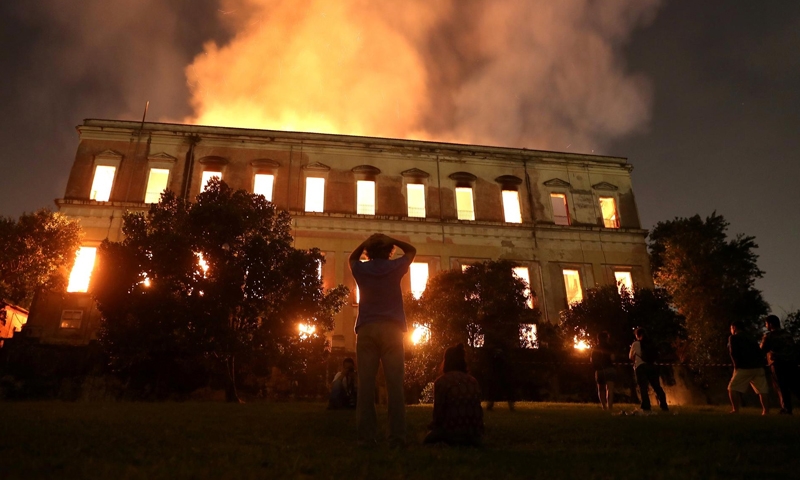Raging fire tears through prized Rio Museum
Rio de Janeiro : A massive fire on Sunday ripped through Rio de Janeiro’s treasured National Museum, one of Brazil’s oldest, in what the nation’s president said was a “tragic” loss of knowledge and heritage. The majestic edifice stood engulfed in flames as plumes of smoke shot into the night sky, while firefighters battled to control the blaze that erupted around 2230 GMT.
Five hours later they had managed to smother much of the inferno that had torn through hundreds of rooms, but were still working to extinguish it completely, according to an AFP photographer at the scene. By morning the extent of the loss was still unclear. Firefighters were poised to enter the charred ruins to see what might be salvageable, a fire department spokesman told AFP, adding that it would be dangerous.
“The facade is resistant, but a lot of material fell from the roof,” he said. “We are going to proceed with great care, to see if we can save something.” The museum, located in the city’s north near the Maracana football stadium, was closed to the public when the fire sparked from a yet unknown cause. The fire “spread very quickly; there is a lot of inflammable material,” a spokesperson for Rio’s fire department told AFP, adding that there were no reports of victims so far. The natural history and anthropology museum was founded in 1818 by King Joao VI and is considered a jewel of Brazilian culture, with more than 20 million valuable pieces to its name.
“This is a tragic day for Brazil,” President Michel Temer said in a statement. “Two hundred years of work and research and knowledge are lost.” “The loss of the collection of the National Museum is incalculable,” he said. The collection included art and artifacts from Greco-Roman times and Egypt, as well as the oldest human fossil found within today’s Brazilian borders, known as “Luzia.” The museum also housed the skeleton of a dinosaur found in the Minas Gerais region along with the largest meteorite discovered in Brazil, which was named “Bendego” and weighed 5.3 tons. Pieces covering a period of nearly four centuries -- from the arrival of the Portuguese in the 1500s until the declaration of the first Brazilian republic in 1889 -- were also stored there.
Related Posts

